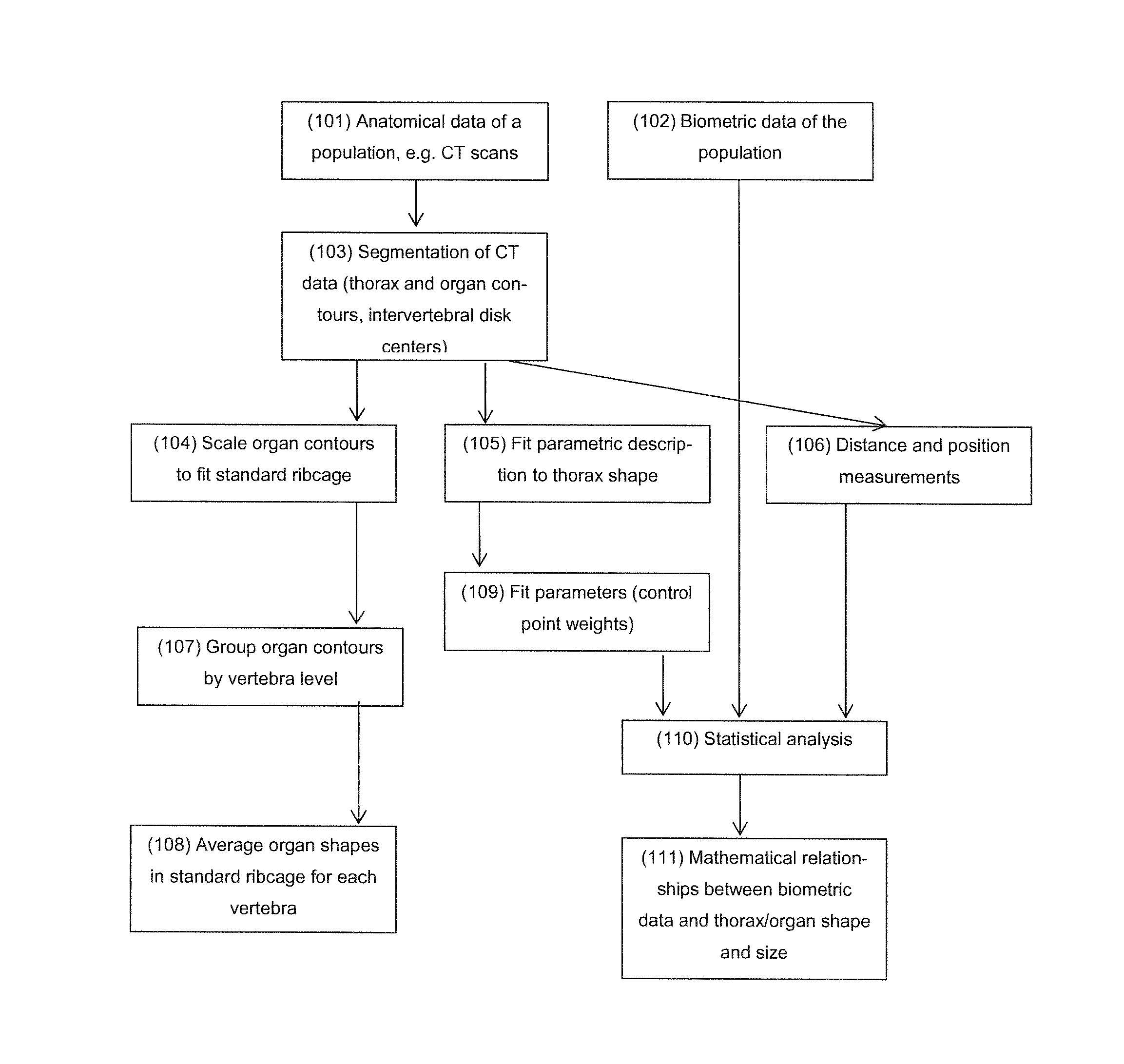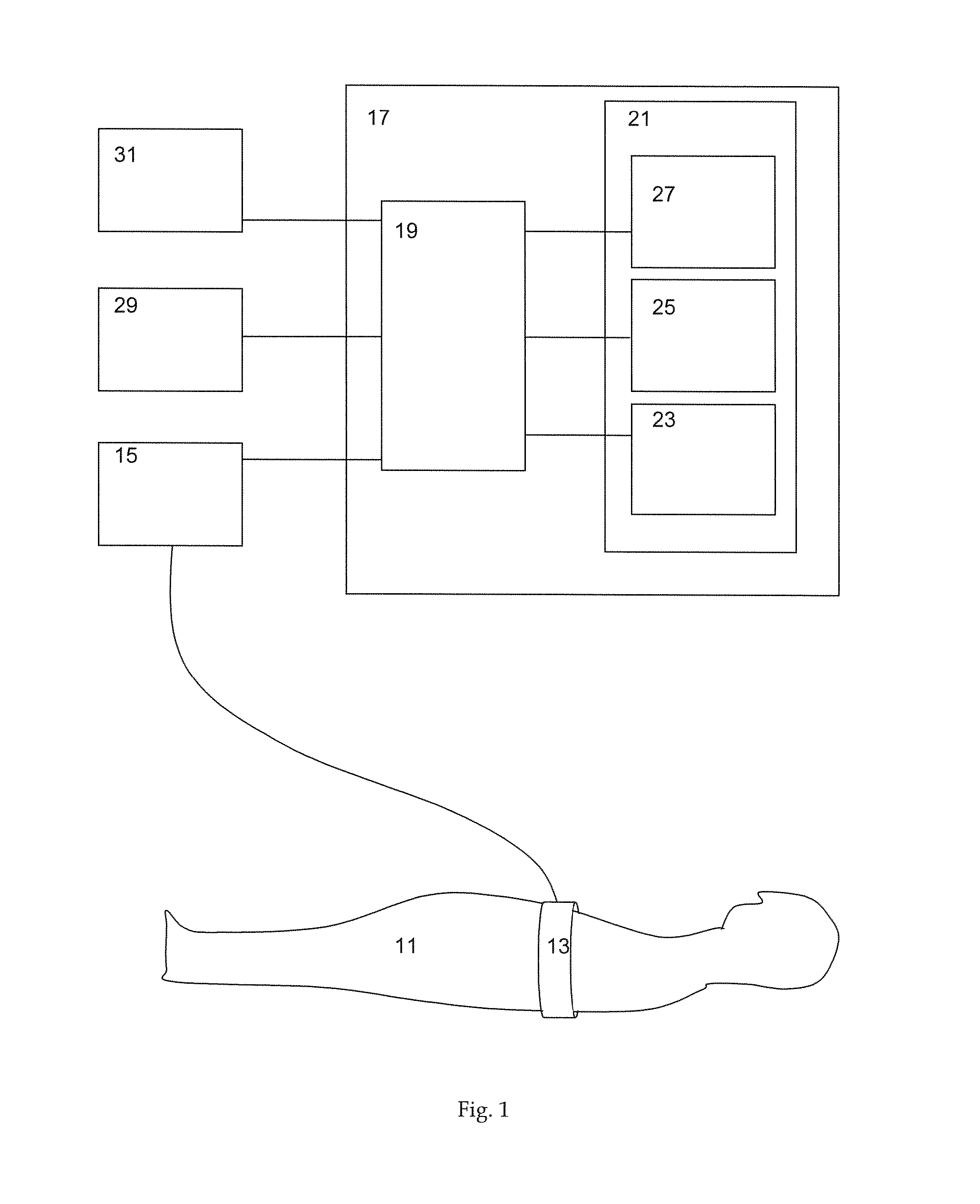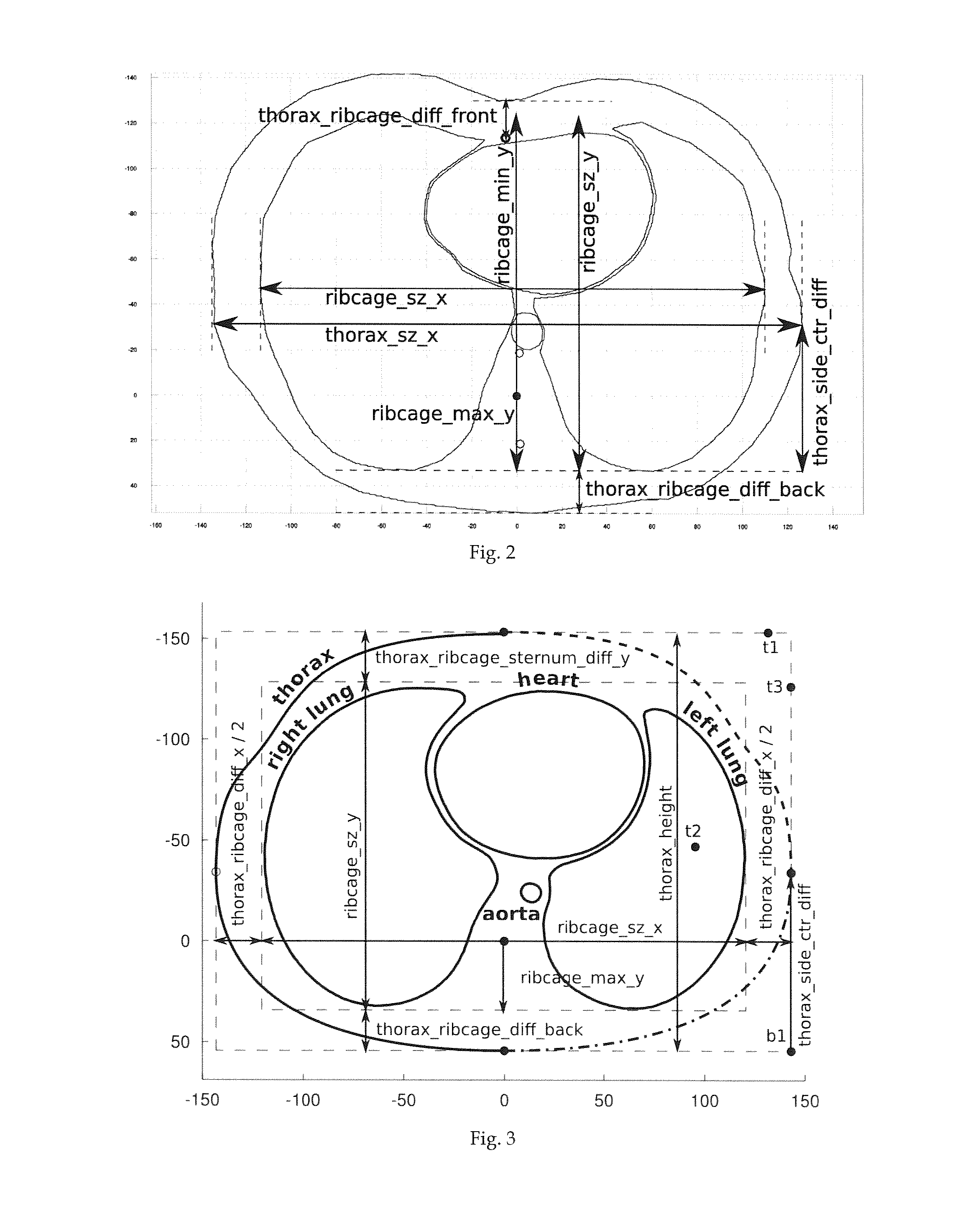Electrical impedance tomography system
a tomography system and impedance technology, applied in the field of electric impedance tomography system, can solve the problems of low spatial resolution of images or heat maps, unclear anatomic structure, and difficulty in interpretation of eit-images, and achieve the effects of saving time and resources, improving image interpretation and correlation with anatomy, and saving time and resources
- Summary
- Abstract
- Description
- Claims
- Application Information
AI Technical Summary
Benefits of technology
Problems solved by technology
Method used
Image
Examples
example
[0183]EIT data measurement and evaluation on a particular patient comprising the steps of:
[0184]For a particular patient one of the patient-category-specific models (which is e.g. stored in storage such as reference numeral 25 of FIG. 1) is selected based on the patient's body height, body weight and optionally the gender (which were e.g. entered via an input interface such as reference numeral 29 of FIG. 1).
[0185]EIT and gravity vector data of the patient are measured (e.g., simultaneously).
[0186]The selected 3D anatomical model is used in reconstructing the EIT image from the measured voltages, here specifically for calculation of a patient-category specific reconstruction matrix.
[0187]The 2D organ contour is associated with the selected patient-category-specific 3D anatomical model for display on a graphical user interface (GUI). The display on the GUI serves as a reference platform for the reconstructed EIT image, in that the selected patient-category-specific contour and the pa...
PUM
 Login to View More
Login to View More Abstract
Description
Claims
Application Information
 Login to View More
Login to View More - R&D
- Intellectual Property
- Life Sciences
- Materials
- Tech Scout
- Unparalleled Data Quality
- Higher Quality Content
- 60% Fewer Hallucinations
Browse by: Latest US Patents, China's latest patents, Technical Efficacy Thesaurus, Application Domain, Technology Topic, Popular Technical Reports.
© 2025 PatSnap. All rights reserved.Legal|Privacy policy|Modern Slavery Act Transparency Statement|Sitemap|About US| Contact US: help@patsnap.com



